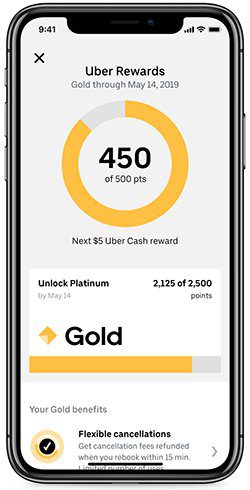When Nick Telling coined the term “gamification” in 2002, he probably did not imagine the world as it is today. Games are no longer the purview of clunky consoles and hand-held controllers; they are a gentle touch away from lighting up our smartphones.
And when we say games, we don’t just mean the kind meant to entertain and do nothing else. Elements of games are quickly seeping into most apps and online portals because the efficacy of a game-like environment has been proven multiple times by now.
Apps and websites in every industry are introducing gamification into their UI. Gamified user journeys tend to show greater user engagement, productivity and specific positive behaviors that benefit businesses and users alike.
In the world of mobility apps, gamification is achieving surprisingly optimistic results. While you would think that something as seemingly mundane as mobility could be made interesting, gamification seems to be proving the idea wrong.
Not convinced? Here are a few examples of real-world mobility apps getting the best out of gamification strategies-
Waze
Waze is a community-based traffic and navigation app. Its users share real-time traffic data, updated about route congestion, accidents, speed traps as well as gas prices to help others find cheap gas stations.
Initially, Waze was a lot like Pac-Man. It showed a route with digital pellets, and you had to travel that road to collect all the pellets, which users ended up doing in huge numbers. Today, Waze uses game elements like a score system, badge rewards, avatars with “moods” and a leaderboard – to encourage users to participate in the community spirit of contribution.

Chromaroma
Chromaroma was a London-based app that made the otherwise tedious Tube (London subway) travel more interesting. It showed users their movements and locations as they swiped their Oyster card when going in and out of the subway.
Once users signed up, Chromaroma used their Oyster card data to award points for each trip, not just on the Tube but also on buses and bikes. The apps tracked stats on swipes, achievements, modes of transport, seasonal highlights, places, “missions,” “collections” and more. This allowed them not just to earn rewards, get awards and bonus points, but also to discover new ways to travel and explore the city beyond the crowded paths.
Uber
Uber’s driver app uses badges and quests to make drivers’ experience more interesting and to make the whole thing feel less like a place of backbreaking work. An earnings tracker is always visible (similar to the “lifeline” in a video game) that reflects how much they have made and how many trips are completed.
Monetary rewards are also built in, which drivers can get by maintaining positive feedback ratings or completing a number of trips within a specified time. There are also tipping systems and other elements to inspire engagement and encourage the driver to get the most out of their workday.

Jaunt
Journey-sharing app Jaunt won the Ford Smart Mobility Game Challenge at the Mobile World Congress 2016. The app allows users to create, share, and join journeys to interesting, popular destinations. They can specify their interests within six categories – food, nature, arts and culture, history, esoteric and weird, shopping. Their “jaunts” are then prioritized and designed by the app accordingly.
The clincher here is that the app offers alternative, possibly less crowded traffic routes. This doesn’t just get users to their destination faster. It also eases the pressure on the most commonly used roads, translating into a win-win situation.
Ford Fusion Hybrid Leaves
While this is different from the other apps covered here, it serves a similar purpose with similar features. On the dashboard of the Ford Fusion Hybrid, there are animated “leaves” which multiply when the car achieves a predetermined level of fuel efficiency. Instead of depicting efficiency with a traditional chart, the gamification element shows a “tree growing,” conveying a better sense of the environmental impact of driving.
The more fuel efficient a driver is, the more the “leaves” and “vines” grow. A game-like interaction between the vehicle and driver turns the cat into a guide for smart, conscientious driving. It encourages fuel-saving and efficiency practices, and creates greater awareness of the effect of human activity on the environment.
—
Gamification works because it turns boring everyday tasks into little snippets of fun. It challenges users to turn everyday activities into fun competition with others, and gives them something positive to take away from making good decisions. It can become a trigger for creating better behavioral patterns, making them more conscious of how they affect transportation and environmental systems.
Well gamified mobility apps should be unique, attuned to the preferences and peeves of commuters and flexible to accommodate new rewards and “quests”. This provides the kind of autonomy and control that all game-players seek, goals them to keep playing and participate in a community that ultimately makes life easier and more interesting for everyone involved.

